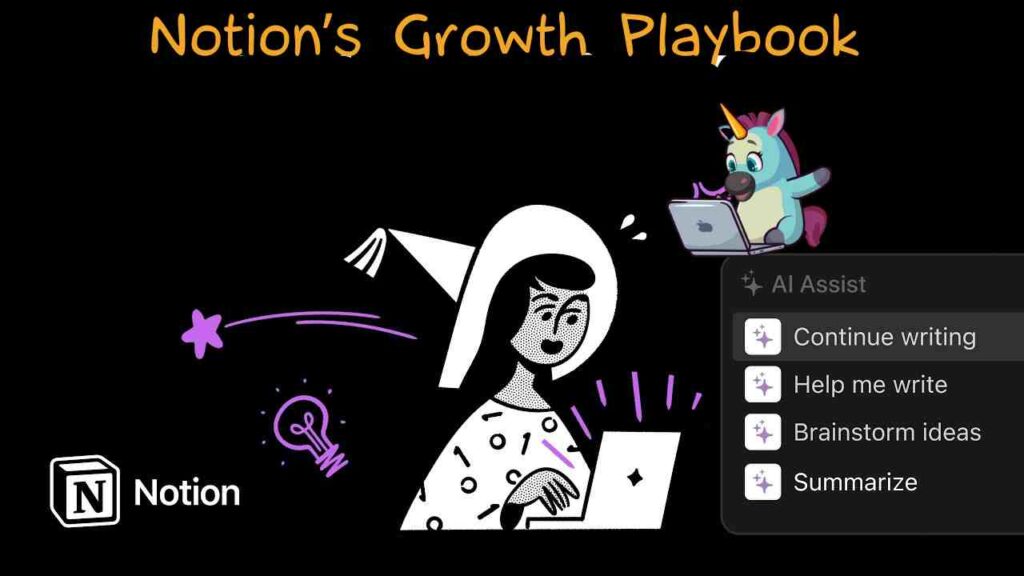
Hey there, growth enthusiasts! 👋
Get ready to have your mind blown by the growth story of Notion, the productivity tool that hits the ground running!
With a $10 billion valuation and millions of users, Notion is the ultimate example of how to absolutely crush it with community-led growth.
In this no-fluff, no-BS playbook, we’ll dive deep into the juicy details behind Notion’s rise from humble beginnings to becoming the go-to workspace for millions of users worldwide.
So, grab a cup of coffee (or your favorite productivity-boosting beverage), and let’s discover the secrets to Notion’s mind-boggling success together!
The Idea💡

It’s 2013, and Ivan Zhao is on a mission to solve his own problem.
As a kid fresh out of college, he found himself constantly churning out 1-page portfolio websites for his designer friends.
Talk about a creativity killer!
That’s when it hit him
What if there was a tool that could help these creative folks build their own websites without needing a degree in computer science?
And just like that, the idea for Notion was born – a platform that would make it easy for anyone to create, customize, and share their work.
The Problem 😫

Before Notion, trying to manage your work and life was like navigating a maze blindfolded.
You had a million different apps for everything – notes, tasks, documents, you name it.
It was a productivity nightmare!
And don’t even get me started on the headache of trying to collaborate with others.
Sending files back and forth, endless email chains, and version control disasters.
The world needed a solution that could bring everything together in one place without the chaos and confusion.
This is the problem Notion called to solve.
The MVP 🛠️
So, how did Ivan and his small but mighty team turn their idea into a reality?
They started with an MVP, of course!
Their goal was simple:
Create a tool that made it easy for anyone to build a website, no coding required.
They focused on three key features:
1️⃣ Drag-and-drop functionality (because who has time for complicated tools?)
2️⃣ Customizable templates (to make you look like a pro with just a few clicks)
3️⃣ Collaboration features (because teamwork makes the dream work!)
The result?
A simple, intuitive platform that allows users to create and share their work like never before.
Product-Market Fit 🎯
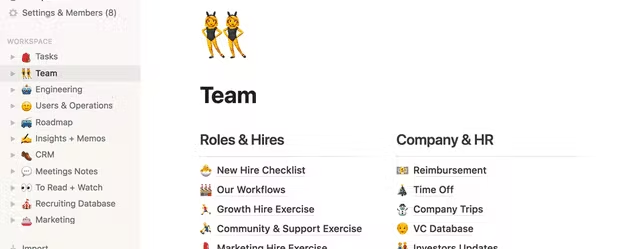
Now, you might be thinking,
“Sure, the MVP sounds great, but did people actually want it?”
Notion’s journey to product-market fit is a story worth telling.
In the early days, Notion struggled to find its footing.
They pivoted from a no-code tool to a productivity platform, searching for that perfect fit.
But then, something great happened.
In 2018, Notion launched its 2.0 version Producthunt, and the floodgates opened.
By the end of that year, Notion had amassed over 1 million users, all through the power of word-of-mouth and organic search.
Fast forward to 2020, and Notion’s user base had quadrupled to a staggering 4 million.
Want more?
In 2021, Notion reached a jaw-dropping $10 billion valuation after raising $275 million in a Series C funding round.
After some pivoting Notion had found its sweet spot – a product that not only solved real problems but also sparked a passionate community of users who couldn’t wait to share their love for the platform.
Positioning & Branding 🎨📐
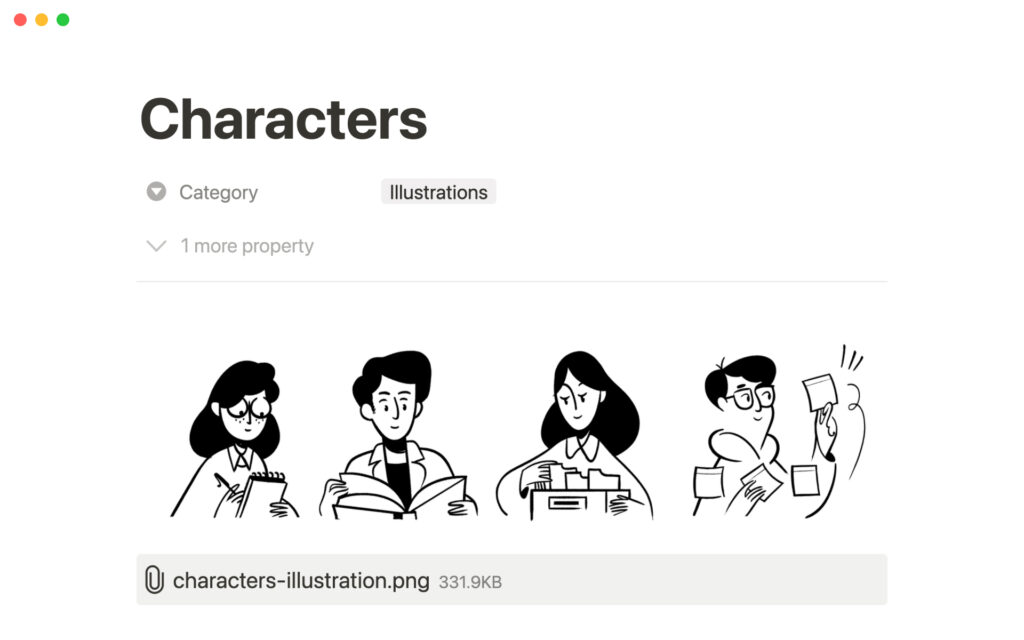
Notion’s positioning is all about simplicity and flexibility.
They market themselves as the “all-in-one workspace” that can replace your scattered productivity tools with a single, unified platform.
Their tagline, “Your connected workspace,” emphasizes the versatility of the product.
Notion isn’t just for note-taking or project management; it’s a customizable solution that adapts to your team’s needs.
Notion’s branding is clean, minimalist, and friendly.
Their logo, a simple black dot with a white “N,” is instantly recognizable and reflects the product’s straightforward nature.
In terms of brand voice, Notion strikes a balance between professional and approachable.
They use clear, concise language that’s easy to understand, with a touch of warmth and humor.
Notion’s branding also emphasizes collaboration and community.
They regularly showcase user-generated content, templates, and success stories, reinforcing the idea that Notion is a tool built for and by its users.
Overall, Notion’s positioning and branding align with their product’s core strengths: simplicity, flexibility, and community-driven innovation.
Pricing 💰📊
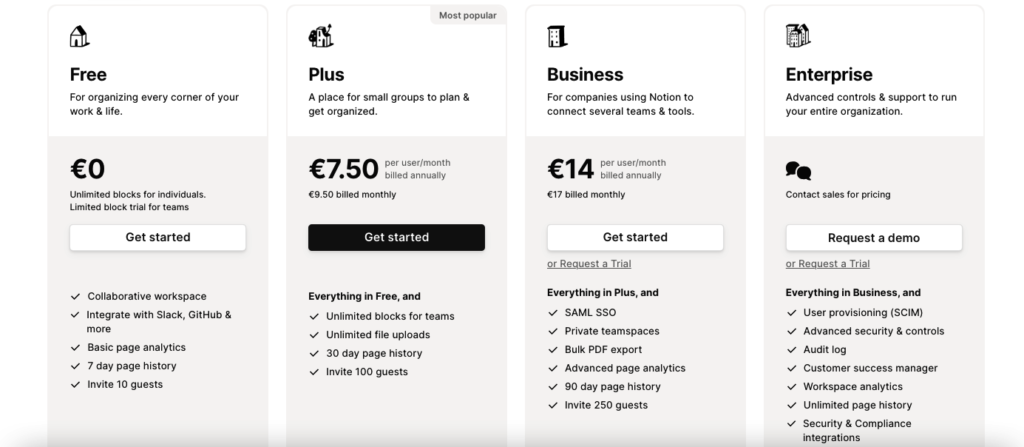
Notion’s pricing strategy is all about balancing value and accessibility.
They offer a free plan that gives individual users access to the core features, including 1000 blocks, essential integrations, and 5MB file uploads.
This allows potential customers to experience the product’s value firsthand before committing to a paid plan.
For teams and businesses, Notion’s pricing is straightforward and transparent.
They offer two paid plans:
Plus ($8 per user per month), Business ($8 per user per month) and Enterprise (custom pricing).
The Plus plan includes everything in the free plan, plus unlimited bllocks, file uploads, version history, and collaborative features like sharing and permissions.
Notion’s pricing is competitive compared to other all-in-one productivity tools, considering the breadth of features and customization options available.
By combining a free plan with affordable, feature-rich paid options, Notion has created a pricing structure that attracts individual users and scales with the needs of growing teams.
Acquisition 🚀📈
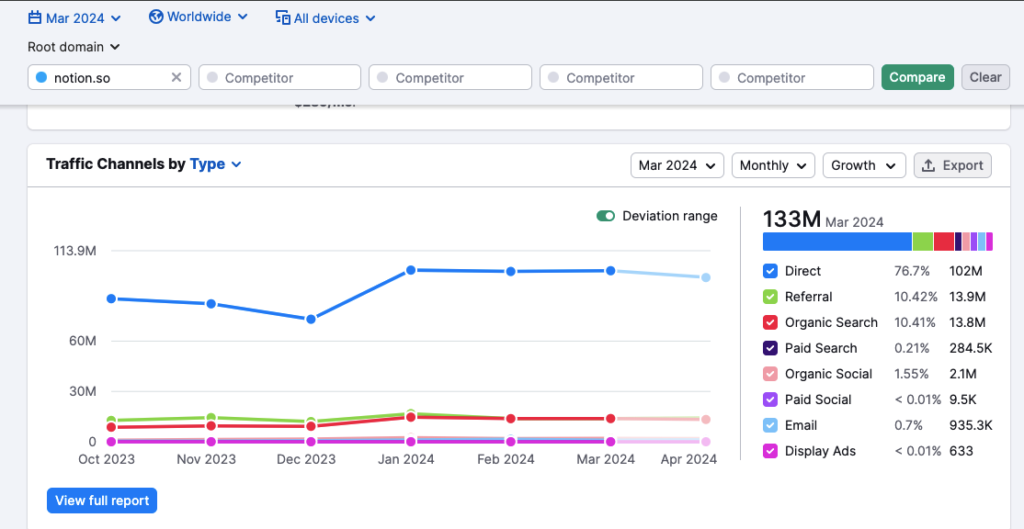
First up, let’s talk numbers.
Notion’s organic search game is so strong they practically own the Google SERPs.
According to Ahrefs, Notion ranks for 1.9 million keywords and pulls in an estimated 11.3 million organic visits per month.
But how did they do it?
Two words:
Content marketing.
Notion’s blog is filled with SEO-optimized content that covers everything from productivity tips to case studies.
They rank for juicy keywords like “project management” (22,000 monthly searches) and “note-taking” (49,000 monthly searches).
But Notion didn’t just rely on organic search.
They also leveraged the power of product-led growth to drive acquisition.
With their free plan and intuitive onboarding, Notion made it easy for users to sign up and start exploring the product right away.
And once users were hooked, they couldn’t help but spread the word.
Notion’s referral program, which offers a 50% commission for each new user referred, has been a real growth driver.
In fact, referrals account for 40% of Notion’s signups.
But the real magic happens when Notion’s acquisition strategy collides with its community-led growth.
By creating a passionate community of advocates, Notion has created an army of loyal users who are eager to sing the product’s praises and bring in new users.
From viral Twitter threads to glowing product reviews, Notion’s community has been a driving force behind the company’s explosive growth.
And with over 250,000 members in their official community and countless more in unofficial spaces like Reddit and Facebook, Notion’s community-powered acquisition shows no signs of slowing down.
Now, get ready for the real magic:
Notion’s secret sauce, the template pages growth loop.
Notion’s template gallery is a collection of pre-built pages for every use case imaginable, from project management to meal planning.
These templates not only showcase the product’s flexibility but also make it incredibly easy for new users to get started and find value quickly.
As users discover, use, and share these templates, they draw even more people into the Notion ecosystem, creating a virtuous cycle of acquisition and activation.
But we’re just scratching the surface here.
In the next section, we’ll dive deeper into how Notion’s template pages growth loop and community-led growth intertwine to create an unstoppable growth machine.
Growth Loops 🔄🚀
Notion’s growth is fueled by a powerful combination of interconnected loops that keep users engaged and attract new ones to the platform.
Let’s break down these loops and see how they work together to create a sustainable growth engine.
Template-Driven Growth Loop
- A user discovers Notion through a template that ranks on Google or gets shared on social media.
- The user signs up for Notion and tries out the template, experiencing the product’s value firsthand.
- Impressed by Notion’s flexibility and ease of use, the user explores more templates and starts customizing them to fit their needs.
- The user shares their customized templates with their network, attracting new users to Notion.
- New users discover the shared templates, starting the loop anew.
Community-Driven Growth Loop
- A user joins Notion’s community, seeking inspiration and support.
- The community provides the user with valuable resources, templates, and advice on their experience with the product.
- The user becomes more engaged and starts contributing to the community by sharing their own templates, experiences, and insights.
- The user’s contributions attract new users to the community and, subsequently, to Notion.
- New users join the community, restarting the loop.
Product Led Growth Loop
- A user signs up for Notion’s generous free plan and experiences the product’s core features.
- As the user becomes more engaged, they discover the benefits of premium features.
- The user upgrades to a paid plan, unlocking additional value and collaboration features.
- The user invites their team members to collaborate on Notion, expanding the product’s reach within the organization.
- New team members join Notion, becoming potential advocates for the product and restarting the loop.
While Notion doesn’t disclose specific data on the impact of these growth loops, the company’s impressive user base of over 20 million users and its $10 billion valuation is a testament to the effectiveness of these loops in driving sustained growth.
As Notion continues to invest in its template library, community, and product features, these growth loops are likely to become even more potent, propelling the company to new heights in the competitive productivity software market.
Activation 🎬🔥
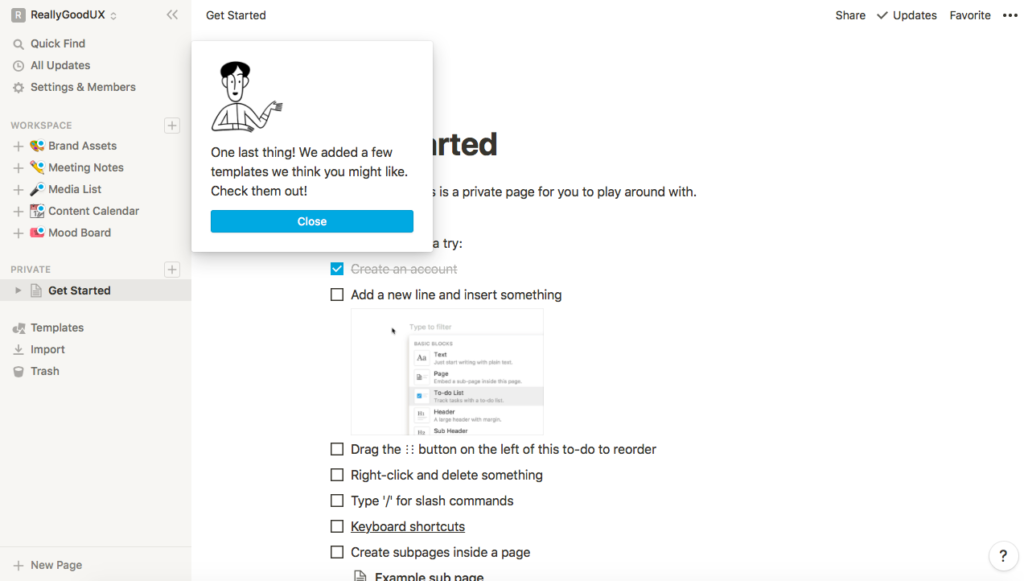
Notion’s activation strategy is all about making it ridiculously easy for users to experience the product’s value and fall head over heels in love with it.
The secret sauce? Templates!
Notion’s template gallery is like a buffet of productivity goodness, serving up pre-built pages for every use case under the sun.
Want to manage your projects like a boss?
There’s a template for that.
Need to plan your meals like a Michelin-starred chef?
You guessed it, there’s a template for that too.
But the thing is that these templates aren’t just pretty faces.
They’re the ultimate wingmen, guiding users through Notion’s features and helping them discover the product’s full potential.
According to Notion’s Head of Marketing, Camille Ricketts, “Templates have been one of the most powerful drivers of activation and retention for us.“
But templates aren’t the only trick up Notion’s sleeve.
They’ve also crafted an onboarding experience smoother than a baby’s bottom, with personalized prompts and helpful hints guiding users every step of the way.
The result?
Users who are activated, engaged, and ready to shout their love for Notion from the rooftops.
Retention 🔒❤
Notion’s retention game is so strong, it’s like the app version of Hotel California – users can check out anytime they like, but they never want to leave.
But how do they do it?
First up, let’s talk about the power of habit.
Notion makes it easy for users to integrate the app into their daily routines, with features like customizable templates, recurring tasks, and seamless integrations with other tools.
The more users rely on Notion, the harder it is to imagine life without it, aka Status Quo Bias.
But Notion isn’t just resting on its habitual laurels.
They’re constantly rolling out new features and improvements based on user feedback, making sure the app keeps pace with users’ evolving needs.
It’s like they’ve got a direct line to their users’ productivity dreams.
And let’s not forget about the community factor.
Notion’s super active community of users and advocates is like a giant group hug, providing support, inspiration, and a sense of belonging that keeps users coming back for more.
The numbers don’t lie – according to Notion’s CEO Ivan Zhao, retention is “significantly higher” than the average productivity app.
While they haven’t shared specific figures, it’s clear that Notion’s retention strategy is paying off in spades.
Referral 📣🎉
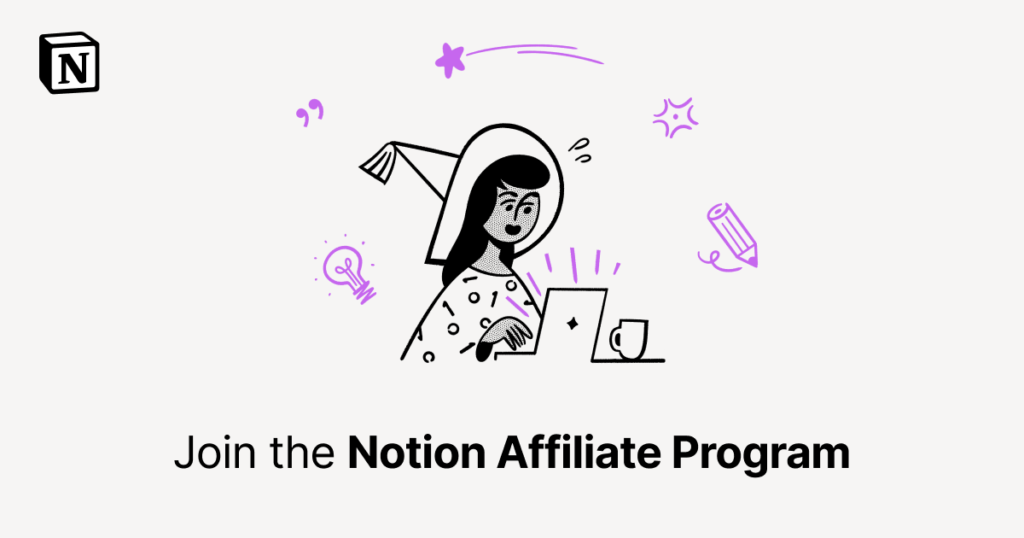
Notion has created a referral program so powerful it’s like the app version of a supersonic jet – it’s taking user acquisition to new heights at breakneck speeds.
Here’s how it works:
Notion users can earn a 50% recurring comission for every friend they refer who signs up for a paid plan.
And the best part?
Notion makes it super easy for users to refer their friends, with built-in sharing options and personalized referral links.
The results speak for themselves – according to Notion’s Head of Marketing, Camille Ricketts, referrals have been a significant driver of growth for the company.
But wait, there’s more! Notion’s referral program isn’t just a one-and-done deal.
Referred users often become referrers themselves, creating a virtuous cycle of growth that just won’t quit.
Lessons Learned: Notion’s Blueprint for Productivity Domination 🎓
So, what can we learn from Notion’s incredible journey?

Notion recognized the need for a more streamlined, all-in-one productivity solution in a world of scattered, single-purpose apps.
By creating a beautifully designed, intuitive platform that combines notes, tasks, wikis, and databases, they’ve solved a genuine problem for teams and individuals alike.
Lesson: Identify a real pain point and craft an elegant, user-friendly solution that simplifies people’s lives.
Adopt flexibility and customization
One of Notion’s greatest strengths is its adaptability. By providing users with a wide array of customizable templates and the ability to create their own, Notion has empowered people to tailor the platform to their unique needs and workflows.
Lesson: Give your users the freedom to personalize their experience and make your product their own.

Notion’s vibrant community of users, advocates, and creators has been instrumental in driving the platform’s growth and success. By actively engaging with their community, featuring user-generated content, and fostering a sense of belonging, Notion has turned its users into its most powerful marketing force.
Lesson: Invest in building a strong, engaged community around your product, and empower your users to become your biggest champions.

Notion’s template gallery and referral program have created a viral loop that continually drives user acquisition and engagement. As users discover, create, and share templates, they draw even more people into the Notion ecosystem, fueling the platform’s growth.
Lesson: Identify opportunities to create viral loops within your product that encourage users to share, invite, and engage others.

Notion’s success is not just a result of its initial product offering, but also its commitment to continuous improvement. By regularly releasing new features, integrations, and enhancements based on user feedback, Notion has stayed ahead of the curve and kept its users engaged.
Lesson: Welcome a culture of iteration and always be looking for ways to refine and enhance your product based on user insights and changing needs.
Phew, what a wild ride through the crazy world of Notion’s growth!
But here’s the thing – this isn’t just Notion’s story.
It’s a blueprint for anyone looking to create a product that people love and can’t stop talking about.
So, if you’ve enjoyed this deep dive into Notion’s growth tactics, I’ve got a small favor to ask.
Could you take a quick moment to share this article with your friends, colleagues, and fellow marketing enthusiasts?
And if you haven’t already, make sure to sign up to get more juicy growth breakdowns and insights delivered straight to your inbox.
Trust me, you won’t want to miss out!
Until next time, keep growing and keep crushing it!




Leave a Reply